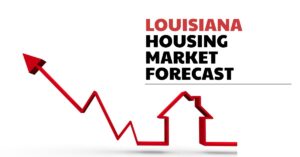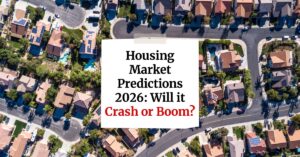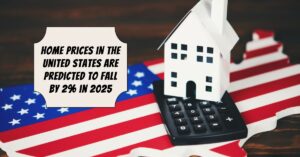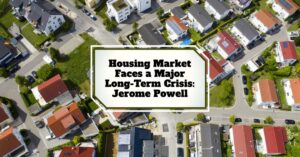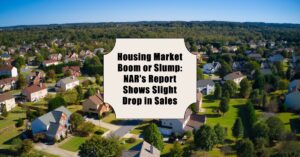The Louisiana housing market, a fascinating blend of rich culture and evolving economic tides, is currently experiencing a period of significant adjustment. As of late 2025, the average Louisiana home value hovers around $209,930, a figure that has seen a slight dip of 0.7% over the past year. This isn't to say the market is frozen; homes are typically going under contract in about 40 days, indicating a steady, albeit not scorching, pace of activity.
My take? While some might see a dip as a sign of trouble, I view it more as a recalibration, a chance for the market to find a more stable footing after a period of rapid growth.
Louisiana Housing Market Trends in 2025
Current Snapshot: Louisiana Housing Market Stats for 2025
To truly get a grasp on where things stand, let's dive into the numbers for October 2025, pulling insights from sources like Zillow, which provide a valuable pulse on the housing industry.
- Homes for Sale: As of September 30, 2025, there were approximately 19,515 homes available across Louisiana. This inventory level gives buyers more options than in recent years, which can be a welcome change.
- New Listings: In September 2025 alone, just over 3,800 new homes entered the market. This number hints at the rate at which new opportunities are being created for potential buyers.
- Sale-to-List Ratio: In August 2025, the median sale to list ratio was 0.982. This means that, on average, homes were selling for about 98.2% of their asking price. From my perspective, this signifies a market moving towards equilibrium, where sellers are still receptive to offers but are less likely to get multiple bids significantly over their asking price.
- Median Sale Price: The median sale price in August 2025 was $234,917. This is a crucial figure for understanding what buyers are actually paying for homes.
- Median List Price: For September 30, 2025, the median list price stood at $269,000. The gap between the median sale price and the median list price (around $34,000) suggests that negotiation is still very much a part of the process.
- Sales Over/Under List Price:
- 13.8% of sales in August 2025 occurred over the list price. This indicates that while competition isn't as fierce as it once was, desirable properties in good locations can still command multiple offers.
- Conversely, a significant 61.6% of sales were under the list price. This is a strong signal that buyers have room to negotiate, especially on properties that might have been priced optimistically by sellers.
Looking at these figures, I don't see a market in freefall. Instead, I see a market that's becoming more balanced. Buyers have more leverage, allowing for more thoughtful decision-making. Sellers, on the other hand, need to be realistic with their pricing to attract a solid offer.
Louisiana Housing Market Forecast for 2025 and 2026
Predicting the future of any housing market is a tricky business, influenced by economic indicators, local job markets, and even broader global events. However, by looking at projections, we can get a sense of potential trends. Zillow's data provides some interesting insights into how different parts of Louisiana are expected to perform.
Here's a breakdown of projected home value changes:
| Region Name | Projected Home Value Change (End of 2025) | Projected Home Value Change (End of 2026) |
|---|---|---|
| National Average | +0.2% | +1.9% |
| New Orleans, LA | +0.2% | -4.0% |
| Baton Rouge, LA | +0.3% | -0.2% |
| Lafayette, LA | -0.1% | -4.3% |
| Shreveport, LA | 0.0% | -3.8% |
| Lake Charles, LA | -0.1% | -6.9% |
| Houma, LA | -0.5% | -7.4% |
| Monroe, LA | 0.0% | -2.1% |
| Alexandria, LA | +0.1% | -3.4% |
| Hammond, LA | +0.1% | -2.9% |
| Opelousas, LA | -0.5% | -7.6% |
| Morgan City, LA | -0.9% | -7.1% |
| Fort Polk South, LA | -0.2% | -4.4% |
| Natchez, MS | -0.8% | -6.4% |
| Ruston, LA | 0.0% | -1.8% |
| Bogalusa, LA | -0.2% | -5.7% |
| Natchitoches, LA | -0.2% | -5.9% |
| DeRidder, LA | -0.8% | -8.4% |
As you can see, the national trend suggests a slight positive growth in home values. However, Louisiana presents a more varied picture. Many of the metropolitan statistical areas (MSAs) within Louisiana are projected to experience modest declines in home values throughout 2025 and into 2026. Some areas, like Houma, Opelousas, Morgan City, and DeRidder, are bracing for more significant drops.
My interpretation of these projections is that Louisiana's housing market might be diverging from the national average. Several factors could contribute to this. For instance, areas heavily reliant on specific industries that might be facing global challenges could see a greater impact. Hurricanes and other weather events always play a role in property values and insurance costs in coastal regions. Also, the general economic climate and interest rate environment will continue to be major drivers.
Will the Louisiana Housing Market Crash in 2025 or 2026?
This is the million-dollar question, isn't it? Based on the data and my understanding of market dynamics, I can tell you this: a widespread, catastrophic crash across the entire Louisiana housing market in 2025 or 2026 seems unlikely.
What we are observing is more of a cooling-off period and a correction in certain segments and regions. The days of bidding wars on every listing are largely behind us. Buyers have more breathing room, and home prices are beginning to stabilize, with some areas seeing slight decreases. This isn't the same as a crash. A crash typically involves a rapid and significant drop in prices across the board, often triggered by severe economic downturns or a glut of foreclosures.
However, it's crucial to differentiate between the state as a whole and specific local markets. As the projection table shows, some smaller cities and towns, particularly those in more vulnerable geographical areas or with less diverse economic bases, might experience more pronounced price adjustments. Zillow's data, which forecasts declines for places like Lake Charles, Houma, and DeRidder, underscores this point. These areas may be more sensitive to regional economic shifts or the ongoing costs associated with weather preparedness and recovery.
On the other hand, larger metropolitan areas like Baton Rouge are projected for more stable, or even slightly positive, growth. This is often due to more diversified economies, stronger job markets, and consistent demand. New Orleans, despite its tourist allure, is also showing a projected modest dip, which could reflect a variety of factors including the cost of living and competition.
My personal take on this is that while sensational headlines about a “crash” might grab attention, the reality is much more nuanced. It’s going to be about local economies, job growth, and demographic shifts. For example, if a major employer in a particular area announces layoffs, that can have a localized impact. Conversely, if a new industry booms in another Louisiana city, that could bolster its housing market.
Key Factors to Watch:
- Interest Rates: While the Federal Reserve has signaled potential rate cuts, the speed and extent of these will significantly influence affordability and demand. Higher rates tend to cool a market, while lower rates can spur activity.
- Job Market: Strong job growth is the bedrock of any healthy housing market. Areas with diverse and growing employment sectors will fare better.
- Inventory Levels: While inventory is currently at reasonable levels, any major shift in the number of homes for sale can impact prices.
- Economic Health of Specific Industries: Louisiana's economy is tied to several key sectors. Performance in sectors like energy, manufacturing, and agriculture will have ripple effects.
- Insurance Costs and Natural Disaster Preparedness: For coastal communities and areas prone to hurricanes, the cost and availability of homeowner's insurance are significant factors that can affect property values and desirability.
Instead of anticipating a crash, I'd advise focusing on understanding the specific market conditions in the areas you are interested in. Each city and town in Louisiana has its own unique story.
What This Means for Buyers in Louisiana?
For Buyers, this current market dynamic presents an opportunity for buyers. With a more balanced supply and demand, you're less likely to face the extreme competition of recent years. The median sale-to-list ratio being below 1.00 means you can likely negotiate on price. Don't be afraid to make reasonable offers. With more homes on the market, you have a better chance of finding a property that truly meets your needs and budget.
Louisiana's Diverse Regional Markets: A Deeper Dive
It’s not enough to just look at Louisiana as a whole. The state's housing market is a mosaic of distinct regional economies and cultural influences. What impacts New Orleans might have a different effect on Shreveport, for instance.
- New Orleans and Surrounding Areas: Known for its vibrant culture, tourism, and growing healthcare sector, New Orleans usually maintains a strong appeal. However, it can also be sensitive to economic fluctuations and the ongoing challenges of coastal resilience. Projections here suggest a slight dip, implying a market that is stabilizing rather than booming.
- Baton Rouge: As the state capital and a hub for several universities and government jobs, Baton Rouge tends to be more economically stable. The projected stability or slight growth here reflects its diversified economic base.
- North Louisiana (Shreveport, Monroe, Alexandria): These areas often have economies tied to industries like manufacturing, agriculture, and regional services. Projections here are mixed to negative, suggesting these markets might be more susceptible to broader economic headwinds or specific local industry trends.
- Acadiana Region (Lafayette, Houma, Lake Charles): This part of Louisiana is known for its unique Cajun culture and is diverse in industry, from energy and petrochemicals to agriculture. Lake Charles, in particular, has seen significant investment in recent years, but also faces environmental and economic boom-and-bust cycles. The projected declines in these areas could be linked to sectors undergoing adjustments. Houma and Morgan City, with their proximity to the Gulf Coast and reliance on industries like oil and gas and fishing, may also be more sensitive to global energy prices and environmental concerns.
Understanding these regional nuances is critical for anyone looking to buy or sell. A property in Baton Rouge might behave very differently from a property in Lake Charles, even if both are within Louisiana.
Final Thoughts:
Having spent time observing and engaging with the Louisiana housing market, I can tell you it’s more than just numbers on a spreadsheet. It’s about communities, dreams, and the distinctive spirit of the state. I've seen firsthand how natural disasters can temporarily stall or even displace housing markets, and I've also witnessed incredible resilience and recovery.
From my perspective, what Zillow's data reveals is a market that is maturing. After a period of intense activity driven by low interest rates and a desire for more space, we're settling into a phase where affordability, local job markets, and long-term economic stability are once again the primary drivers of home values. This isn't a bad thing; it's a healthy return to fundamentals.
I firmly believe that Louisiana's unique cultural appeal and its strategic position in some key industries will continue to attract residents and investment. The key is not to panic about projected modest declines but to understand the underlying reasons and to make informed decisions. For buyers, this might mean a chance to get into a desirable neighborhood they might have been priced out of during the peak. For sellers, it means being smart about pricing and presentation.
The housing market will always have its cycles, and Louisiana is no exception. The forecast, while showing some dips, doesn't paint a picture of a widespread collapse. Instead, it points to a market that is recalibrating, offering different opportunities and challenges depending on where you are in the state.
Build Wealth with Turnkey Real Estate Investments
High interest rates don’t have to hold you back. Turnkey rental properties still deliver steady cash flow and long-term appreciation—especially in markets with strong rental demand and job growth.
Work with Norada Real Estate to identify profitable, cash-flowing markets that thrive even when borrowing costs rise—so your investments stay strong and stress-free.
NEW TURNKEY DEALS JUST ADDED!
Talk to a Norada investment counselor today (No Obligation):
(800) 611-3060
